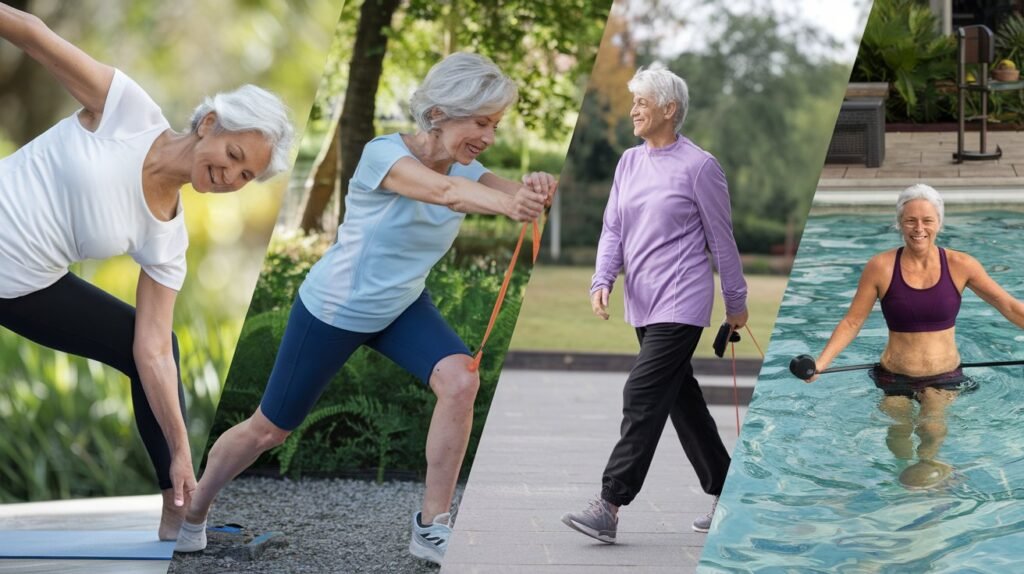Unlock Lifelong Movement: Key Strategies for Maintaining Mobility as You Age


Getting older doesn’t have to mean slowing down completely. While some changes are natural, losing the ability to move freely and confidently isn’t an inevitable part of aging. Maintaining mobility—the ability to walk, bend, reach, and navigate your world—is crucial for independence, health, and overall quality of life. A recent piece on CNN Wellness highlights just how important this is and offers insights into how we can actively preserve our physical freedom as we age. Let’s explore the key takeaways.
Why Mobility Matters More Than Ever

It’s easy to take mobility for granted when we’re younger, but its value becomes crystal clear as the years pass. Good mobility isn’t just about getting from point A to point B; it’s the foundation for:
- Independence: Performing daily tasks like shopping, cooking, cleaning, and personal care without assistance.
- Safety: Significantly reducing the risk of falls, which can lead to serious injuries and a subsequent decline in confidence and activity.
- Social Connection: Easily visiting friends and family, attending events, and engaging with the community, combating isolation.
- Physical Health: Supporting cardiovascular health, maintaining muscle mass, managing weight, and improving circulation.
- Mental Well-being: Boosting mood, reducing stress, and enhancing cognitive function through physical activity and engagement.
Essentially, maintaining mobility is key to maintaining control over your life and continuing to enjoy the activities you love.
Understanding the Common Roadblocks

Why does mobility sometimes decline with age? Several factors can contribute, and understanding them is the first step toward addressing them:
- Sarcopenia: The natural, age-related loss of muscle mass and strength. Less muscle makes movement harder and balance more precarious.
- Stiff Joints: Conditions like osteoarthritis can cause pain and stiffness, limiting range of motion.
- Balance Issues: Changes in vision, inner ear function, and proprioception (your sense of body position) can affect stability.
- Fear of Falling: A previous fall or the fear of one can lead to decreased activity, creating a cycle of declining mobility and increased risk.
- Chronic Conditions: Issues like diabetes, heart disease, or neurological conditions can impact mobility.
- Inactivity: A sedentary lifestyle is perhaps the biggest contributor—the less you move, the harder it becomes to move.
The good news? Many of these factors can be positively influenced through proactive steps.
Your Action Plan—Key Strategies for Staying Mobile

As the CNN article likely emphasizes, taking action is crucial. It’s not about becoming a marathon runner overnight but incorporating consistent, targeted movement into your routine. Focus on these key areas:
- Strength Training: Use light weights, resistance bands, or even your own body weight (like chair squats or wall push-ups) to build and maintain muscle mass. Strong muscles support your joints and power your movements. Aim for 2-3 sessions per week.
- Balance Exercises: Practice standing on one leg (holding onto support if needed) or walking heel-to-toe, or try activities like Tai Chi or yoga, which are excellent for improving stability and reducing fall risk.
- Flexibility and Stretching: Gentle stretching, yoga, or Pilates can help maintain range of motion in your joints, reducing stiffness and making everyday movements like reaching or bending easier. Stretch regularly, especially after warming up.
- Endurance (Cardio): Activities like brisk walking, swimming, cycling, or dancing get your heart rate up, improving cardiovascular health, stamina, and overall energy levels. Aim for at least 150 minutes of moderate-intensity activity per week, broken into manageable sessions.
- Stay Hydrated and Eat Well: Proper nutrition, particularly adequate protein, supports muscle health, while hydration keeps joints lubricated.
- Regular Checkups: Discuss any mobility concerns, pain, or dizziness with your doctor. They can rule out underlying issues and recommend specific exercises or physical therapy.
Mindset Matters: It’s Never Too Late to Start

Perhaps the biggest hurdle isn’t physical, but mental. It’s easy to think, “I’m too old,” “It’s too late,” or “I’m not fit enough.” Banish those thoughts! The research consistently shows that improvements can be made at any age.
- Start Small: Don’t try to do everything at once. Begin with short walks or simple exercises you feel comfortable with.
- Be Consistent: Regular, moderate activity is more beneficial than occasional intense bursts. Find activities you enjoy to make it sustainable.
- Listen to Your Body: It’s okay to have off days. Rest when needed, but don’t let it become an excuse for prolonged inactivity. Modify exercises if you feel pain.
- Focus on Progress, Not Perfection: Celebrate small victories—walking a little further, feeling a bit steadier, reaching something more easily.
Conclusion: Move Towards a More Vibrant Future
Maintaining mobility as we age isn’t just about exercise; it’s an investment in our independence, health, and happiness. As highlighted by wellness experts and resources like CNN, the challenges are real, but so are the solutions. By understanding the factors involved and committing to a proactive plan incorporating strength, balance, flexibility, and endurance, we can significantly influence how well we move through our later years.
Before starting any new exercise program, it’s always wise to consult with your doctor or a qualified physical therapist to ensure it’s safe and appropriate for your individual health needs.
What steps are you taking to maintain your mobility? Share your tips or experiences in the comments below!



